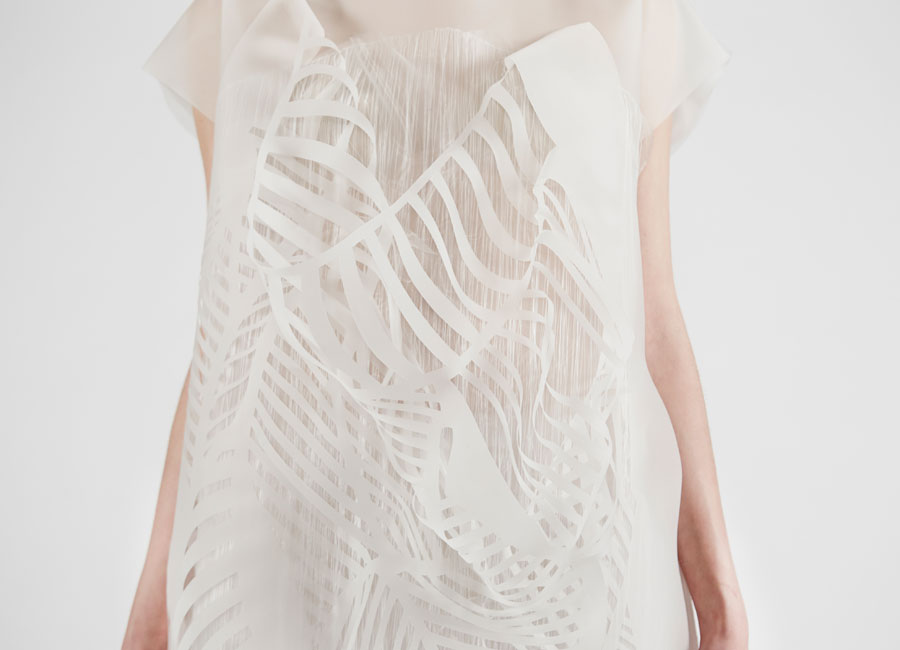Die Modedesignerin Ying Gao beeindruckte mich erstmals im Jahr 2009, als ich eine interaktive Ausstellung von ihr in Basel besuchte. Eine schmale Wendeltreppe führte mich in einen vollkommen dunklen Raum hinunter, in dem beleuchtete Kleiderskulpturen standen. Durch Pusten in ein kleines Mikrofon hob und senkte sich die Kleidung im Brustbereich, als würde sie atmen.
In einer anderen, stockfinsteren Ecke hing eine Taschenlampe von der Decke. Ich nahm sie und leuchtete gespannt vor mich. Da stand ein weiteres Modell, dessen zahllose Lamellen sich, je nachdem wohin ich mit der Taschenlampe leuchtete, mehr oder weniger stark bewegten und in ihrer Bewegungsintensität dem Lichtstrahl folgten.
Seitdem sind mir die Arbeiten von Ying Gao auf meinen Streifzügen durch Blogs immer wieder begegnet und ihr neustes Projekt „(no)where(now)here“ ist im wahrsten Sinne des Wortes definitiv einen genaueren Blick wert, denn die beiden Kleider reagieren auf Augenkontakt.
Sie bestehen aus Photolumineszenzgarn und beinhalten eine „Eye Tracking“-Technologie, die Augenbewegungen und Blinzeln erkennt. Die Inspiration dazu fand die in Montreal ansässige Designerin in einem Essay namens „Esthétique de la disparition“ (zu deutsch: Die Ästhetik des Verschwindens) von Paul Virilio aus dem Jahr 1979:
„Absence often occurs at breakfast time – the tea cup dropped, then spilled on the table being one of its most common consequences. Absence lasts but a few seconds, its beginning and end are sudden. However closed to outside impressions, the senses are awake. The return is as immediate as the departure, the suspended word or movement is picked up where it was left off as conscious time automatically reconstructs itself, thus becoming continuous and free of any apparent interruption.“
Click here to read this article in english








All images copyright protected by Dominique Lafond
How Ying Gao describes the projects „(no)where(now)here“:
The series comprising two (2) dresses, made of photoluminescent thread and imbedded eye tracking technology, is activated by spectators‘ gaze. A photograph is said to be “spoiled” by blinking eyes – here however, the concept of presence and of disappearance are questioned, as the experience of chiaroscuro (clarity/obscurity) is achieved through an unfixed gaze.
The project was inspired by the essay entitled „Esthétique de la disparition“ (The aesthetic of disappearance), by Paul Virilio (1979): „Absence often occurs at breakfast time – the tea cup dropped, then spilled on the table being one of its most common consequences. Absence lasts but a few seconds, its beginning and end are sudden. However closed to outside impressions, the senses are awake. The return is as immediate as the departure, the suspended word or movement is picked up where it was left off as conscious time automatically reconstructs itself, thus becoming continuous and free of any apparent interruption.“









